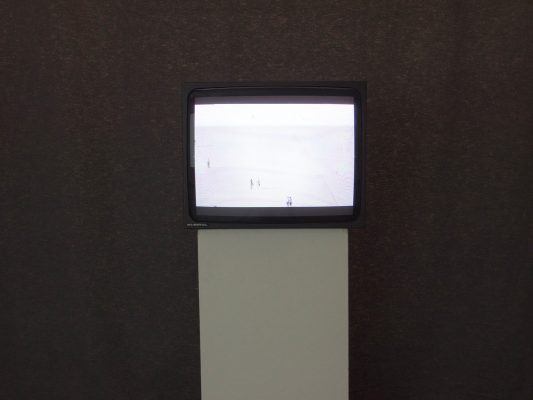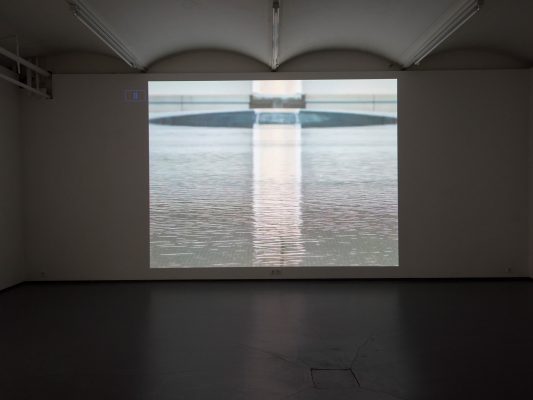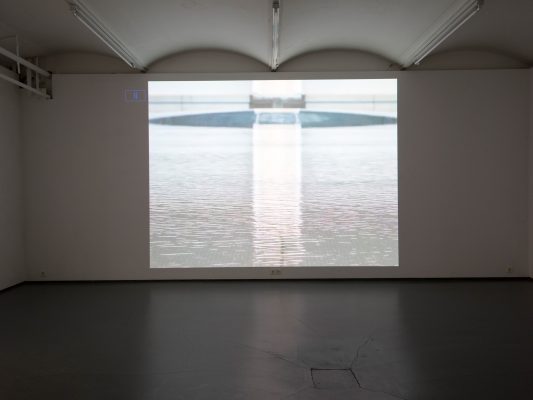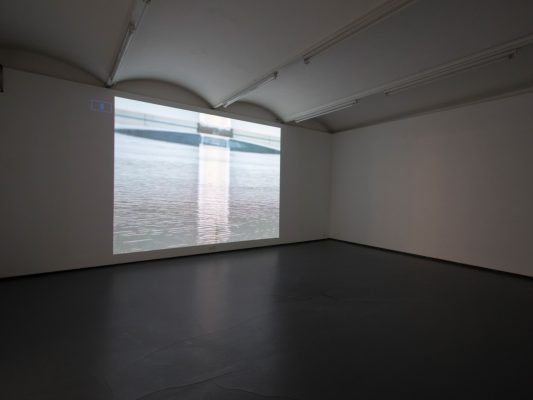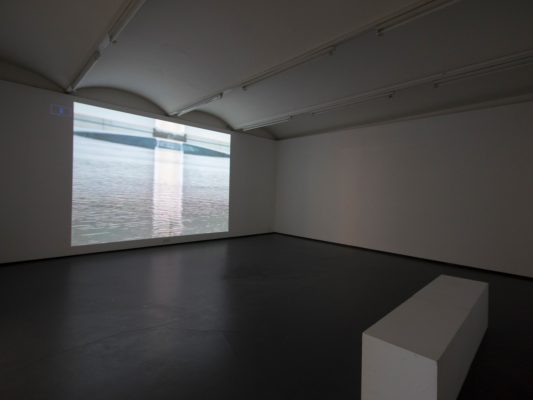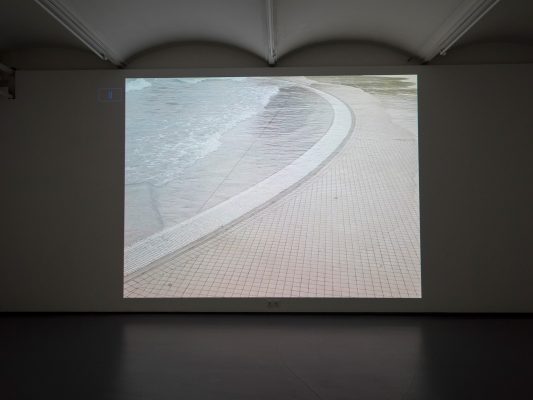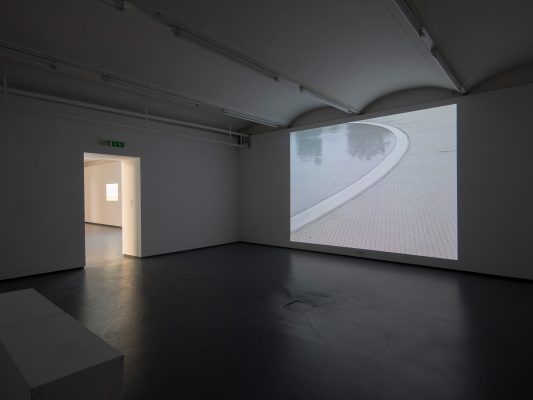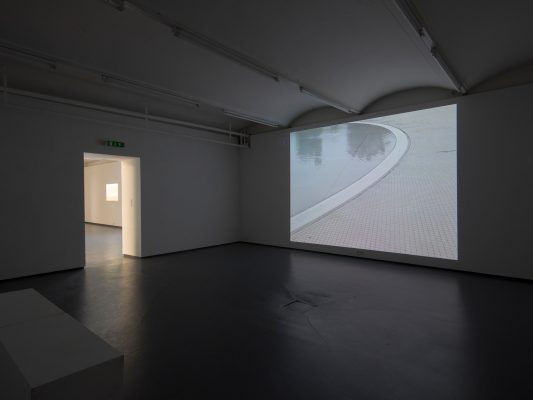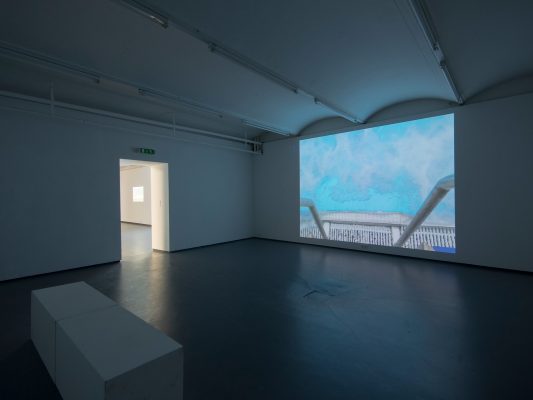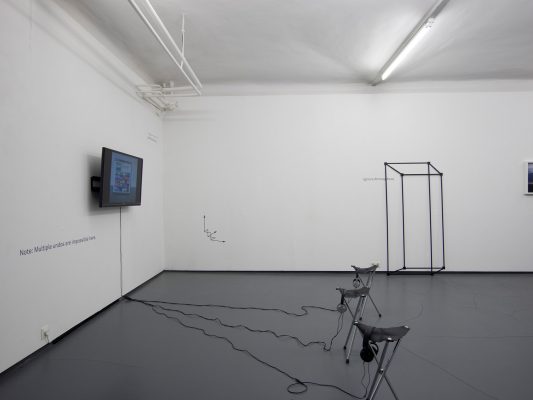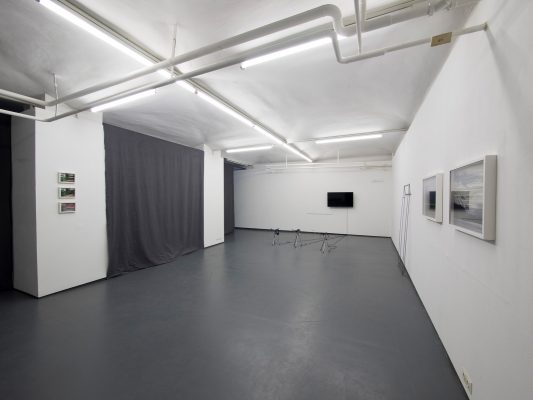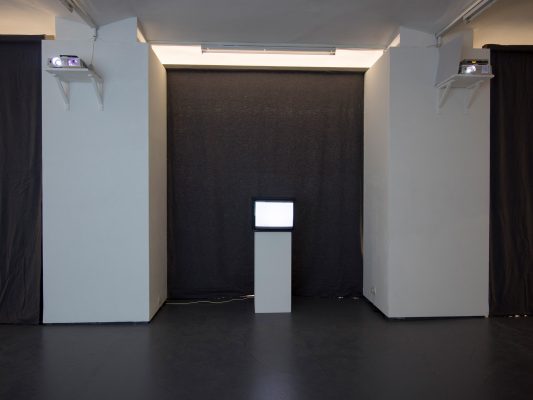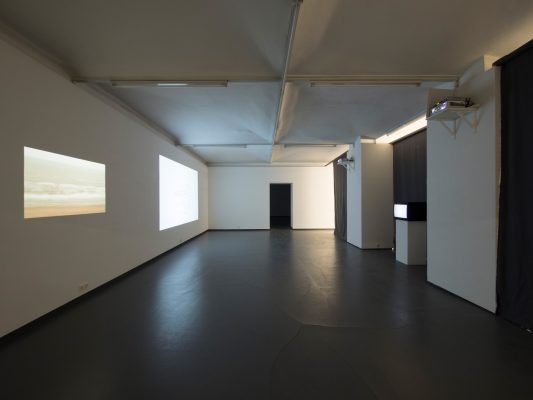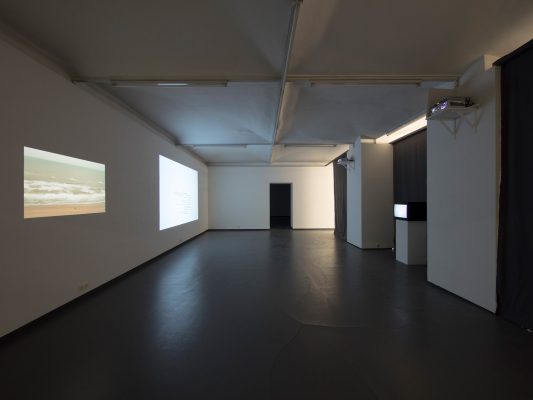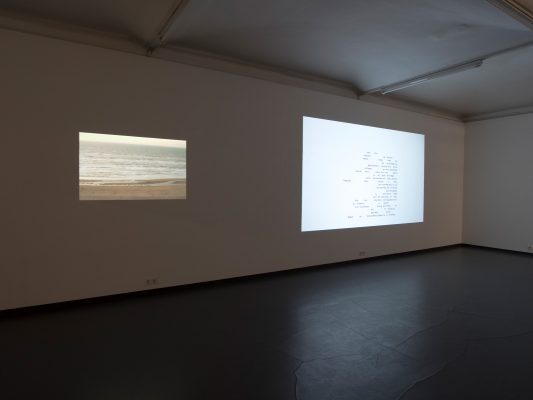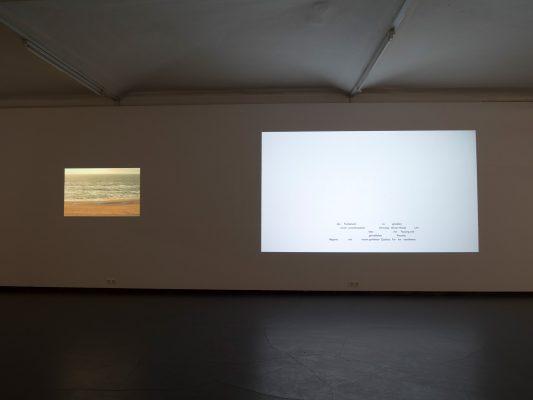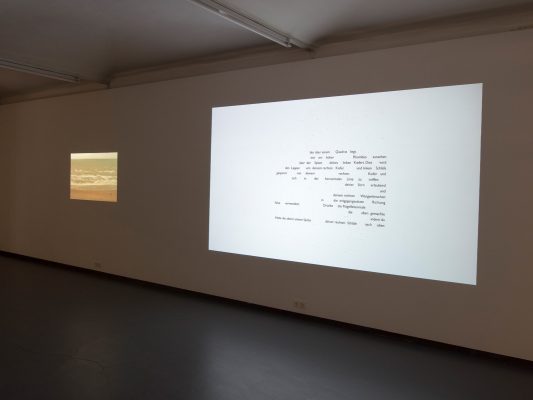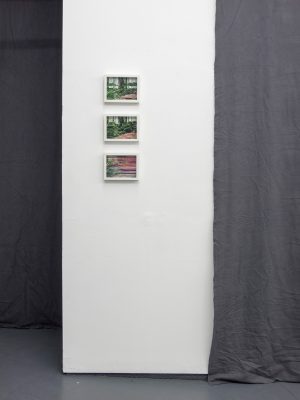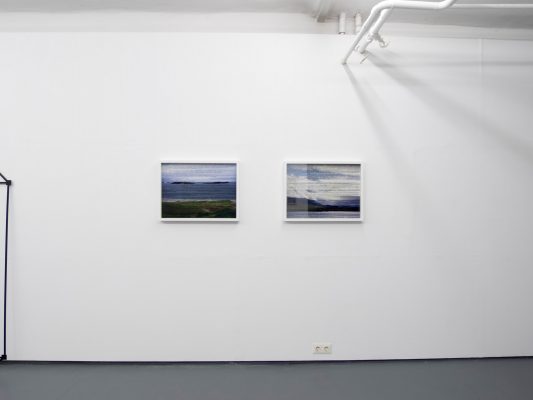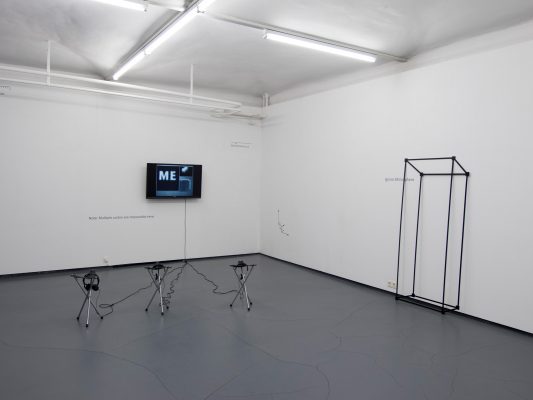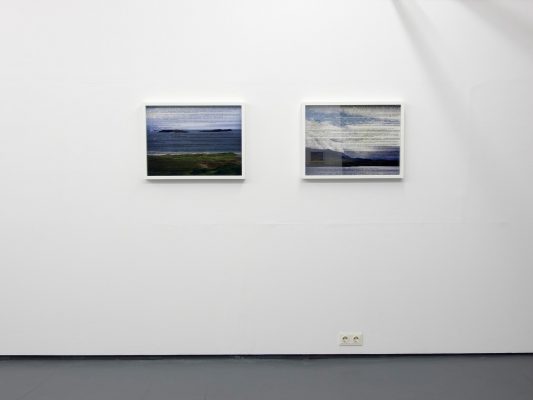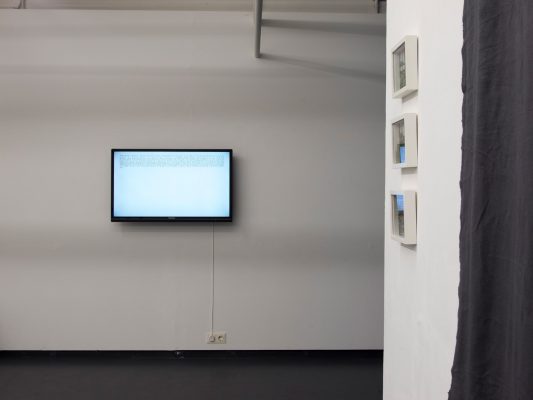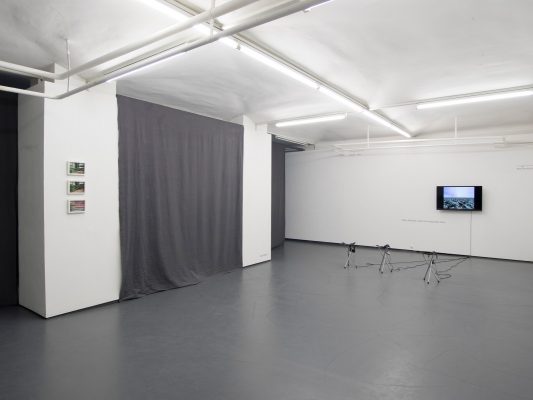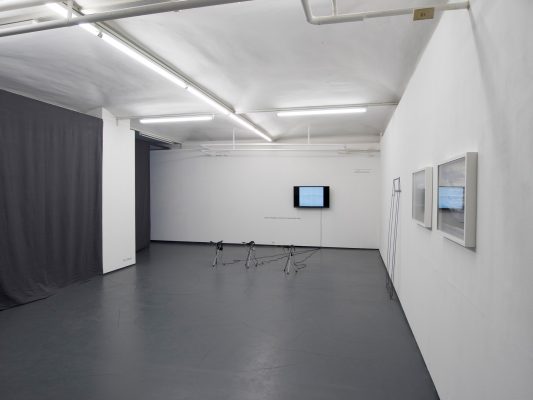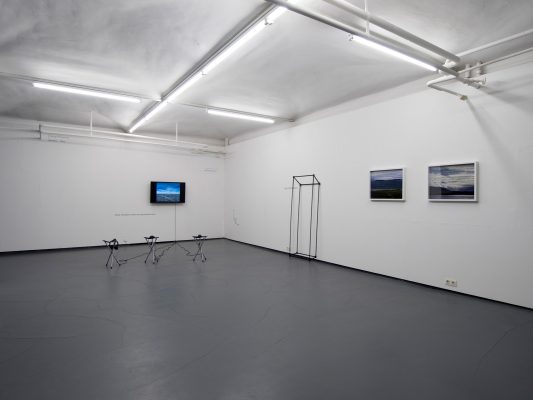Opening: Monday, 7 April at 7 p.m.
Introduction: Melanie Ender and Julian Tapprich
sponsored by: bka – Sektion VI/ Kultur, MA7-Kultur, Cyberlab
In the exhibition Don’t touch the vanishing point, five artists are showing photo and video works containing invented pictorial landscapes that guide our perception in a new direction. Their engagement with language, text, text images and picture information plays a major role here. In their works which are sited between reality and fiction, the artists (self)confidently employ fractured dialogues and linguistic constructions, user manuals, codes and picture errors without creating dramaturgical high points. A foreign world opens up that initially appears to have a high degree of inaccessibility – we encounter shadow-like beach-goers, the eroding Großglockner mountain or cryptic text-image landscapes. These are worlds where other laws and signs hold sway but they open up to us via their inherent poetic associations.
Julie Gufler was born in 1983 in Copenhagen and lives there and in Hamburg. The artist and writer also works in the visual arts genre, examining the potential of text and language of that context as well as producing images that can arise from her texts. She is showing the video works Eine Ökonomie des Gesichts and There is a Tension in This Connecting String, for which she animated text material. It forms patterns that become a picture. In the video Eine Ökonomie des Gesichts the individual animated words come into being slowly, the sentences form in the opposite direction to the normal top to bottom. They entangle and thus cannot longer be read by the viewer. The content is irritating – instructions about how to fold an origami crane from a face – engaging with the portrait genre, a further area which the artist is concerned.
Annja Krautgasser, was born in 1971 in Hall in Tyrol and lives and works in Vienna. She is presenting two video works. Zandvoort was made on the North Sea coast of the Netherlands. Here an unmoving camera is pointed at the beach landscape in which little “stories” happen. Pin-sized, shadowy protagonists move in different rhythms along the beach. They appear only to disappear again. It remains uncertain as to what is real and what fictitious. The 13 minute video shows the events of a day in time lapse but it nevertheless conveys a feeling of calm that borders on the meditative. In contrast, the original (natural) sounds were not reworked in post-production. As in Zandvoort, the video Prelude deals with space. Here, too, people are viewed from a distance – in this case they are out for a walk. Space here is abstract, something that only comes into being because of the people moving through it.
Simona Obholzer, born in 1982 in Tyrol, lives and works in Vienna. Her silent, approx. five-minute video work, 6:00-8:00, – the title refers to the time of day during which it was shot – shows how waves behave within the limits of a swimming pool. Various shots examine the inter-relationship of water, movement and technology. Because of the framing and the absence of bathers, the images created become abstract at times. The rhythmic movements of the water rise and fall, go forwards and backwards like breathing. The concrete nature of the swimming pool architecture is always present in the image and contrasts with the effect of the movement which can be described as meditative and sensual. The work opens up associations, expectations and questions especially in relation to that which is a suggested absence, like the sound and without proposing an answer.
Almut Rink, was born in 1971 in Erfurt/Germany and lives in Vienna. For the FOTOGALERIE WIEN exhibition she will be making an installation developed out of the video work Reverse Engineering. For the video she set out on an “expedition” through computer landscapes using 3D software. Starting out from the cocooning strategy that the screen journey includes, Rink alludes to, and transforms, the screen language of a landscape rendering programme. The language and structural content is dissected – nature as a mental space and a projection. In this “tutorial” the parameters of this digital nature-space are examined. The text material of a 3D user handbook, a psychology of migration and her own commentary interlock making a continuous first-person narrative. In the end the landscape/identity which has just been generated begins to erode.
Patrizia Wiesner-Ledermann was born in 1981 and lives in Vienna. She is showing photo works from the series Words may change your image (2008) and Your image is a code (2009) in which she examines the relationship of the perception of images and writing. Landscape photographs are covered in texts. These consist of the digital text code of the photo concerned. She is engaging here with the fact that although a picture can be described, it cannot be adequately translated into concepts. This is why the ways of seeing pictures and the experience of them as concepts are always depicted as a visual opposition. When the code of the photograph becomes a visible component of the depicted landscape, then text and image encounter one another in a single field. This leads to a change of perception because the pictorial motif is covered to a large extent by text and the decipherment of the code gets lost in the details of the image.
Petra Noll, for the collective
